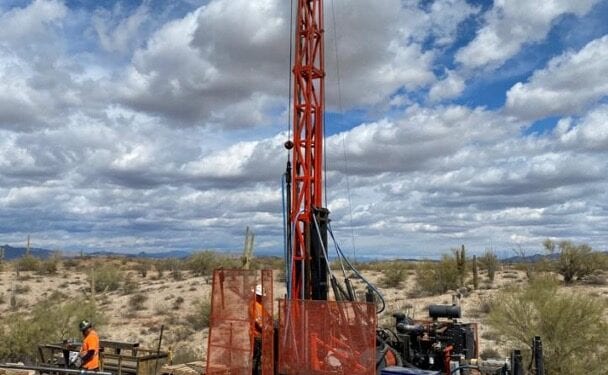Targeting Scandium And Rare Earths In Arizona
American Rare Earths Limited (ASX: ARR) has commenced the first drilling programme for nine years at the La Paz Rare Earths Project in Arizona in the USA.
Operated by its wholly owned US subsidiary, Western Rare Earths, the latest exploration programme at La Paz is looking to increase the resource size and average grade and pave the way for an advanced metallurgical study.
The La Paz Project is a low-grade critical mineral target with the extraordinary advantage of its sheer volume, and possible opportunity for 1) simple concentration via magnetics, 2) ultra-low penalty element content (Thorium <7ppm), and 3) low cost of open-pit production.
In addition, the project has the advantage of being in a Fraser Institute global Top 2 mining friendly jurisdiction and is one of the very few mining asset classes referenced favourably by the Biden Administration.
Timberline Drillers has a world-class crew onsite along with consulting geologists to guide the work. WRE was able to commence drilling immediately due to its excellent preparation of drill pads and access roads while awaiting final permits. This presents a unique and helpful opportunity in this mining friendly jurisdiction.
This is the first drilling at the Project since 2012. In 2011 the maiden resource was established by the project predecessor, with 195 extremely shallow percussion holes drilled down to 30m. In 2020, this data was reviewed to confirm the previous defined resource, allowing ARR to announce the first formal JORC 2012 classified resource estimate of 128.2Mt @ 373.4ppm (0.037%) Total Rare Earth Elements (TREE).
The company is focused on drilling deeper as it explores the opportunity to increase the resource size and average grade. As stated by Mr Guilinger (CP) in the the 2020 JORC 2012 compliant technical report Interpretations and Conclusions, “a detailed review of the previous drilling at different elevations indicates opportunity for more than 60 metres thickness of higher-grade Rare Earths values in the lower plate gneiss. Thus, the topography lends itself to the opportunity to substantially increase the resource by deeper drilling in the lower plate, where higher grade Rare Earths is prevalent. This analysis supports the plan for a core drilling campaign to 61 metre depths…”
The core material will be fillet cut, photographed and assayed in 1.5m sections. 500kg of targeted core material will be forwarded to a world-class Rare Earths metallurgy lab for advanced metallurgy work. The primary metallurgy work will focus on utilising proven, econonomically viable processing. This work will establish a flow sheet that will be at the core of the Preliminary Economic Assessment the Company expects to publish in late 2021.
Additionally, in the Recommendations section of the 2020 JORC 2012 compliant technical report, Mr Guilinger states that “Scandium values tend to be high also in areas of high ppm TREE, so the drilling will also likely identify a Scandium resource greater than 11ppm.” Therefore, the company will utilise the core drill assay results from this campaign to determine if a maiden resource of Scandium can be established, concomitant and additional to the Rare Earths resource estimate of 128.2Mt.












